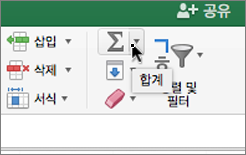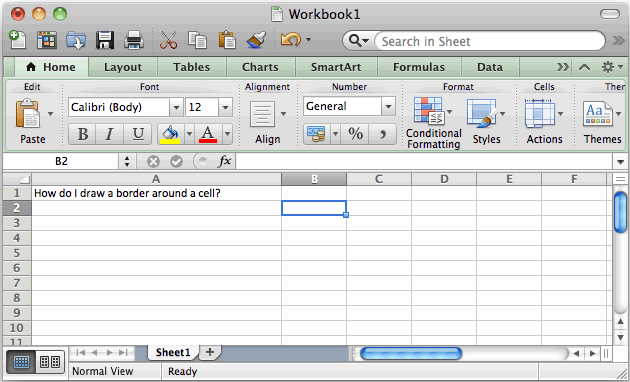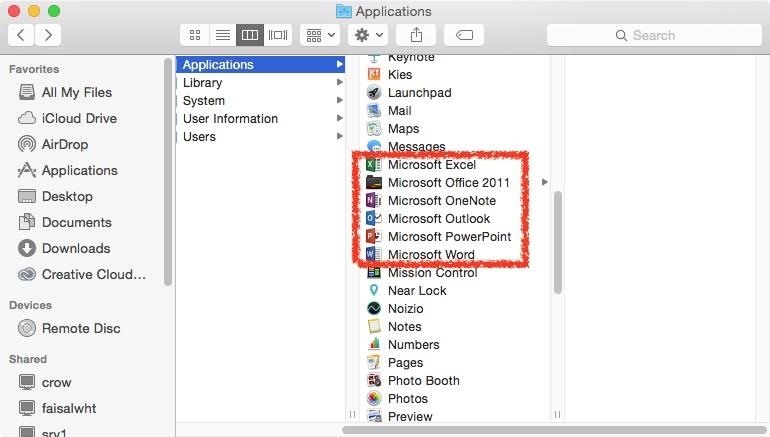- To provide you with the best experience, Office for Mac supports the three most recent versions of Apple's macOS. With the release of macOS 10.15 Catalina, Microsoft 365 for Mac and Office 2019 for.
- Word, Excel, PowerPoint, OneNote, Outlook, Publisher, Access, InfoPath, SharePoint Workspace, Visio Viewer, OCT, Lync First version to ship in 32-bit and 64-bit. Last version to support Windows XP, Windows Server 2003, Windows Vista, and Windows Server 2008.
Many people asked the same question in different forums over the internet. It's a dilemma that you're afraid of losing the latest version of Excel, so you press Command and S regularly to save it. However, the latest version is not always the one you want especially your Mac automatically changed the data on the Excel without your permission. Here in the following, I'm going to tell you how to recover previous version of Excel file on Mac in Microsoft Excel for Mac 2011, 2016 and 2020.
Method #1. Try to press Command and Z at the same time
It depends on your level of proficiency with Excel, but Excel for Mac is just fine. I was a power user on PC and now am a power user on Mac. It took me just a few weeks to internalize it all. For basic operations.
To provide you with the best experience, Office for Mac supports the three most recent versions of Apple's macOS. With the release of macOS 10.15 Catalina, Microsoft 365 for Mac and Office 2019 for Mac support macOS 10.15, 10.14, and 10.13. Jan 19, 2021 The program lies within Productivity Tools, more precisely Office Tools. The most popular versions among Microsoft Excel for Mac users are 14.0, 12.3 and 10.1. This program's bundle is identified as com.microsoft.Excel. The file size of the latest downloadable installation package is 876.8 MB.

If you're working on the Excel file or have kept the Excel opening all the time, you can try to press the Command and Z button at the same time to go back to the previous version of Excel file on Mac. It is the easiest way. However, you have to do the get-back several times.
Method #2. How to Restore Previous Version of Excel File on Mac with the Built-in Tool
Many software tools on Mac are able to save versions of documents automatically whenever you open, duplicate, close or even delete the documents. It is the same with Worksheet on Mac. In this case, you can easily recover any of the previous version of the Excel file you need. Here are the steps to excel Mac recover previous version:

Excel For Mac Version History
- Open the latest version of the Excel file. And then choose 'File' > 'Restore' > 'Restore to Last Saved to Recovering'. Next, you need to tick marks along the timeline to browse all versions of the Excel file. It could be a long list if you have edited the Excel file many times.
- Find the previous version of the Excel file you need and choose how you want it to be on your Mac. If you want to restore the current version to the previous version, click 'Restore'. If you just want to save it to your Mac without overwriting the current one, press and hold the Option key, then click 'Restore a Copy'.
My suggestion for you is to save a version explicitly. All you need is to open the previous excel file on Mac, then choose 'File' > 'Save' > 'Save As'. After then, you can choose a place on your Mac to recover previous version of Excel file on Mac with a different name.
Method #3. Scan for the Lost/Deleted Excel File on Mac with Software
If you only need to recover the previous version of the Excel file on Mac, I think method 2 will do. However, if the Excel file is lost or deleted, you can recover it only with the help of a professional Mac excel file recovery tool, like iBeesoft Data Recovery for Mac. In the following, how to restore permanently deleted or lost Excel files on Mac with Software.
Step 1. Install iBeesoft Data Recovery on Mac

Download iBeesoft Data Recovery for Mac on your computer. It is virus-free, professional and trustworthy data recovery software which is designed for people to recover Excel file on Mac. It is fully compatible with Excel and macOS Mojave and former versions.

Step 2. Select Files to Scan
Launch the Mac excel file recovery software is ready to scan for all the supported files by default. You need to uncheck the unwanted file types, only keeping the 'Documents ' option selected and click 'Start' to recover deleted or lost previous version of Excel file on Mac.
See More Results
Step 3. Select Mac Drive to Scan
All hard drive of your Mac are listed in the main window. From there, you need to select the one from where you have lost the Excel file. And then, click 'Scan'.You can see the software is scanning your Mac for the Excel worksheets right away.
Excel For Mac Versions

If you're working on the Excel file or have kept the Excel opening all the time, you can try to press the Command and Z button at the same time to go back to the previous version of Excel file on Mac. It is the easiest way. However, you have to do the get-back several times.
Method #2. How to Restore Previous Version of Excel File on Mac with the Built-in Tool
Many software tools on Mac are able to save versions of documents automatically whenever you open, duplicate, close or even delete the documents. It is the same with Worksheet on Mac. In this case, you can easily recover any of the previous version of the Excel file you need. Here are the steps to excel Mac recover previous version:
Excel For Mac Version History
- Open the latest version of the Excel file. And then choose 'File' > 'Restore' > 'Restore to Last Saved to Recovering'. Next, you need to tick marks along the timeline to browse all versions of the Excel file. It could be a long list if you have edited the Excel file many times.
- Find the previous version of the Excel file you need and choose how you want it to be on your Mac. If you want to restore the current version to the previous version, click 'Restore'. If you just want to save it to your Mac without overwriting the current one, press and hold the Option key, then click 'Restore a Copy'.
My suggestion for you is to save a version explicitly. All you need is to open the previous excel file on Mac, then choose 'File' > 'Save' > 'Save As'. After then, you can choose a place on your Mac to recover previous version of Excel file on Mac with a different name.
Method #3. Scan for the Lost/Deleted Excel File on Mac with Software
If you only need to recover the previous version of the Excel file on Mac, I think method 2 will do. However, if the Excel file is lost or deleted, you can recover it only with the help of a professional Mac excel file recovery tool, like iBeesoft Data Recovery for Mac. In the following, how to restore permanently deleted or lost Excel files on Mac with Software.
Step 1. Install iBeesoft Data Recovery on Mac
Download iBeesoft Data Recovery for Mac on your computer. It is virus-free, professional and trustworthy data recovery software which is designed for people to recover Excel file on Mac. It is fully compatible with Excel and macOS Mojave and former versions.
Step 2. Select Files to Scan
Launch the Mac excel file recovery software is ready to scan for all the supported files by default. You need to uncheck the unwanted file types, only keeping the 'Documents ' option selected and click 'Start' to recover deleted or lost previous version of Excel file on Mac.
See More Results
Step 3. Select Mac Drive to Scan
All hard drive of your Mac are listed in the main window. From there, you need to select the one from where you have lost the Excel file. And then, click 'Scan'.You can see the software is scanning your Mac for the Excel worksheets right away.
Excel For Mac Versions
How Do I Get Word And Excel On My Mac
Step 4. Excel Mac Recover Previous/Lost Version
It only take a few seconds for the data recovery software to scan your Mac for the Excel files. After then, you can see all the found worksheet files are listed in the result window. Find the one you need and click 'Recover' to save them to your Mac again.
